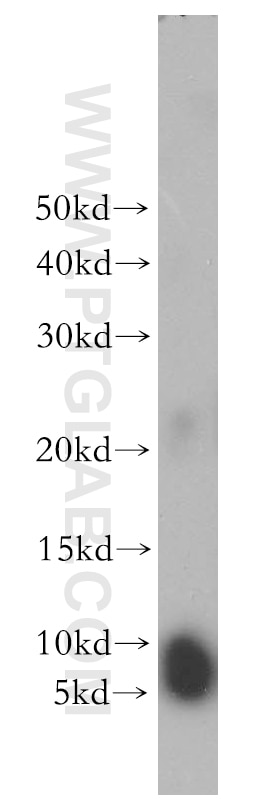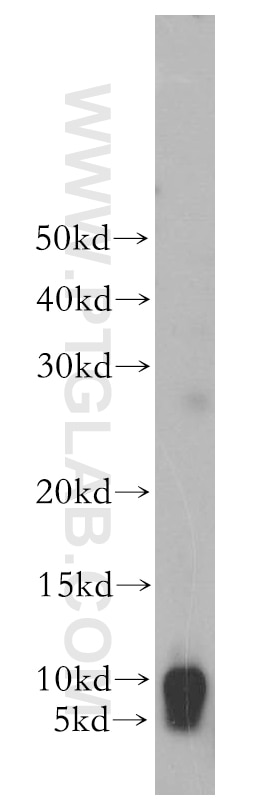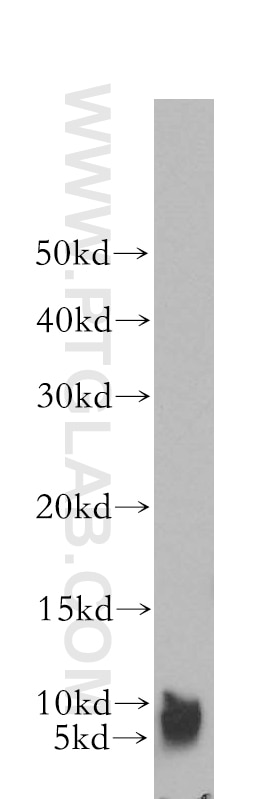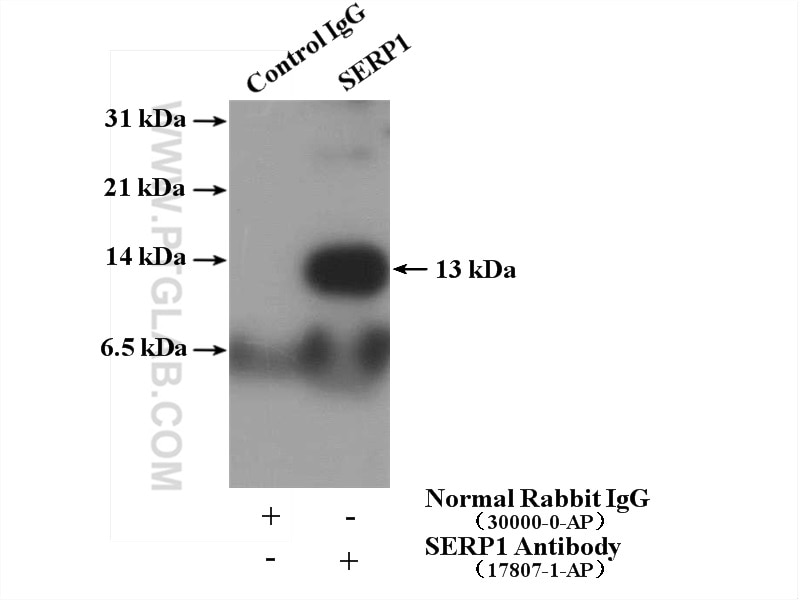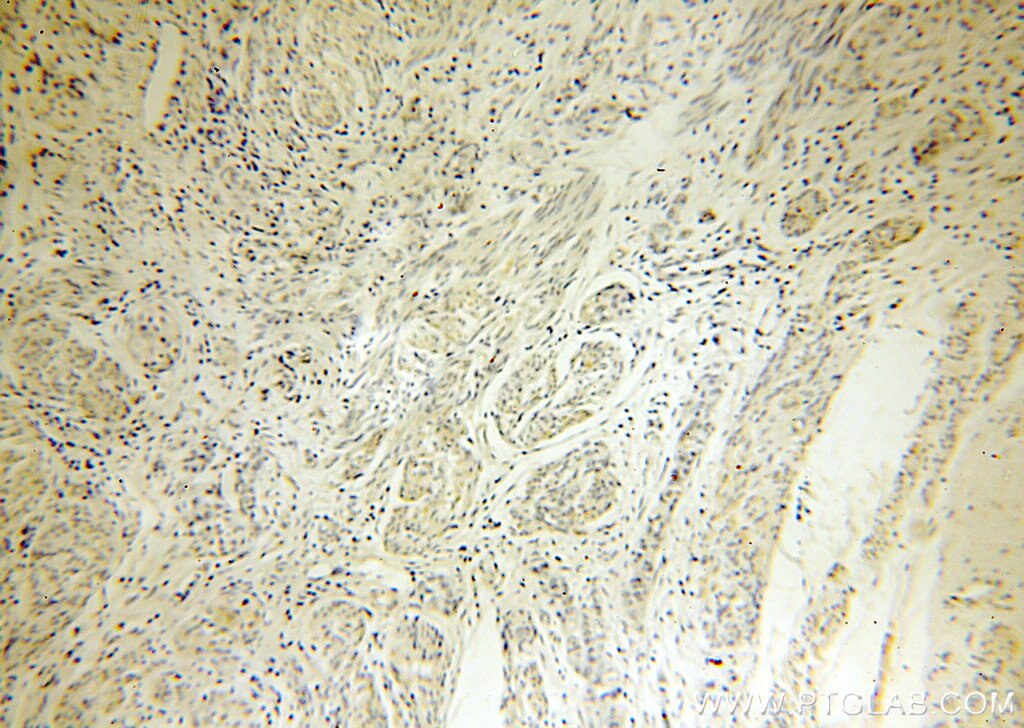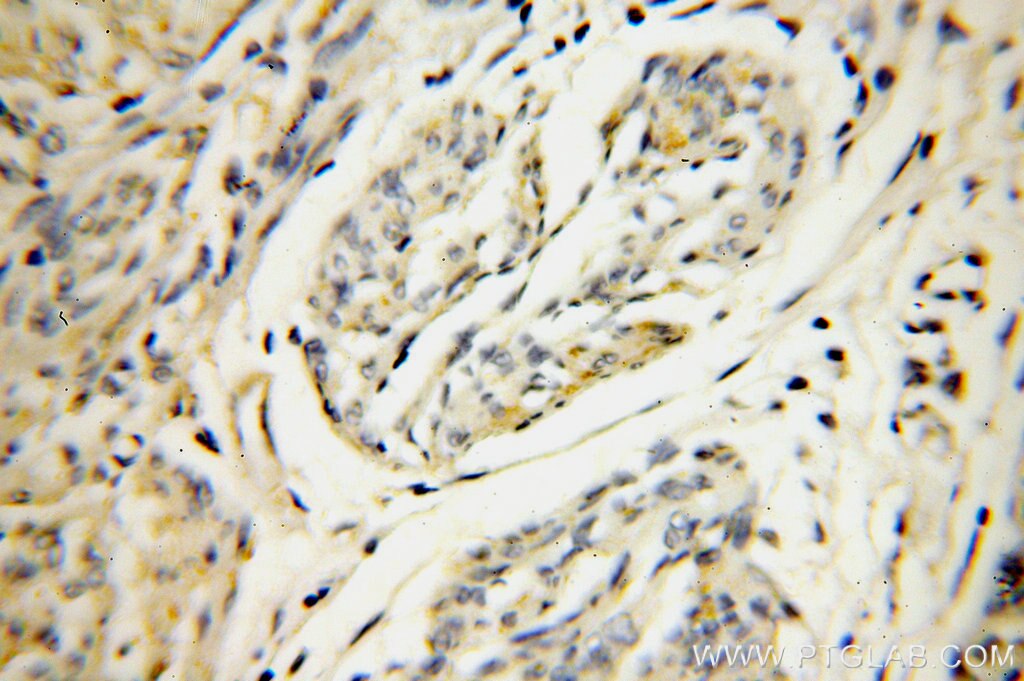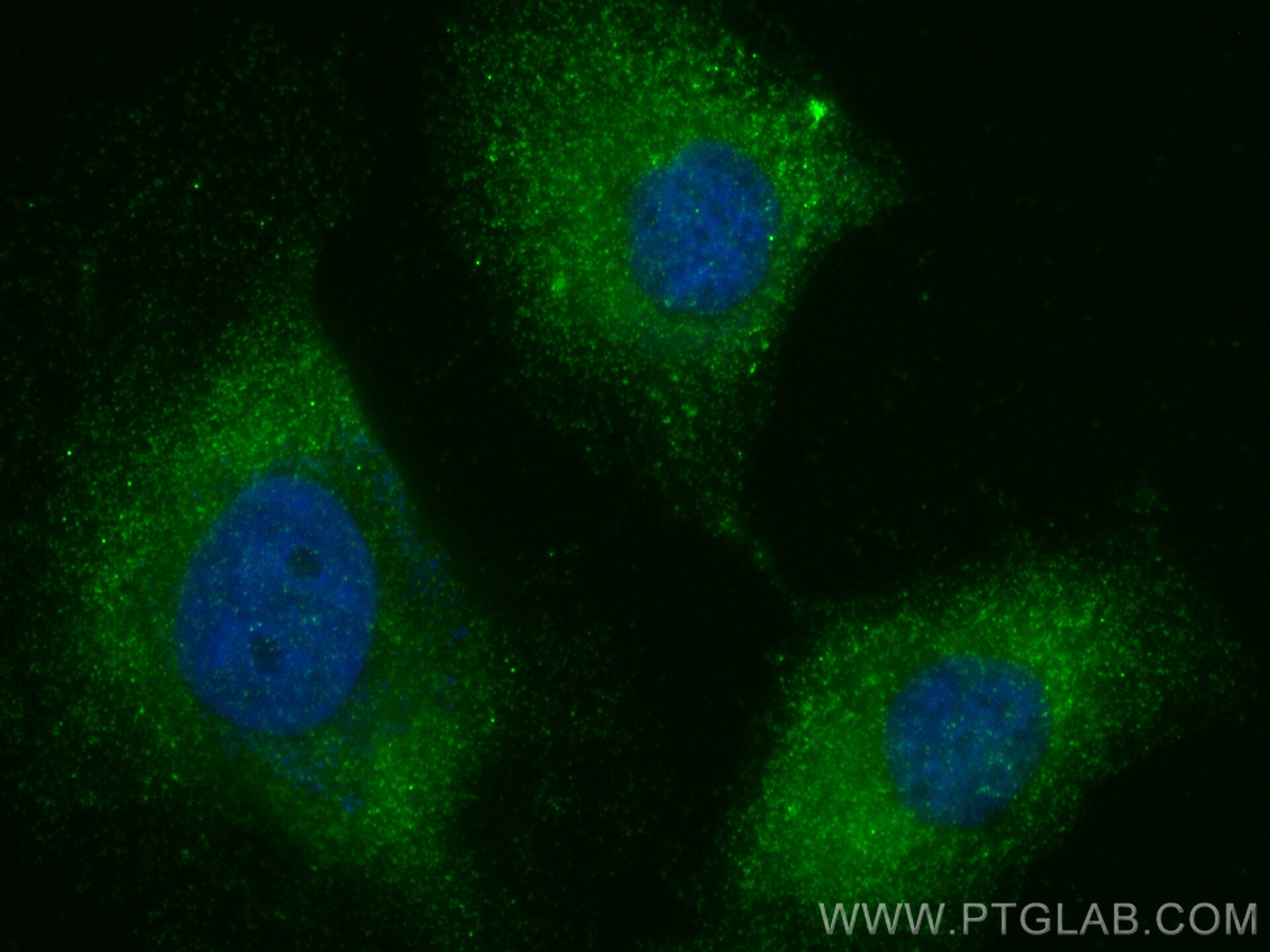SERP1 Polyklonaler Antikörper
SERP1 Polyklonal Antikörper für WB, IHC, IF/ICC, IP, ELISA
Wirt / Isotyp
Kaninchen / IgG
Getestete Reaktivität
human, Maus, Ratte
Anwendung
WB, IHC, IF/ICC, IP, ELISA
Konjugation
Unkonjugiert
Kat-Nr. : 17807-1-AP
Synonyme
Geprüfte Anwendungen
| Erfolgreiche Detektion in WB | Maushirngewebe, HeLa-Zellen, Maus-Pankreasgewebe |
| Erfolgreiche IP | Maushirngewebe |
| Erfolgreiche Detektion in IHC | humanes Endometriumkarzinomgewebe Hinweis: Antigendemaskierung mit TE-Puffer pH 9,0 empfohlen. (*) Wahlweise kann die Antigendemaskierung auch mit Citratpuffer pH 6,0 erfolgen. |
| Erfolgreiche Detektion in IF/ICC | HeLa-Zellen |
Empfohlene Verdünnung
| Anwendung | Verdünnung |
|---|---|
| Western Blot (WB) | WB : 1:500-1:2000 |
| Immunpräzipitation (IP) | IP : 0.5-4.0 ug for 1.0-3.0 mg of total protein lysate |
| Immunhistochemie (IHC) | IHC : 1:20-1:200 |
| Immunfluoreszenz (IF)/ICC | IF/ICC : 1:50-1:500 |
| It is recommended that this reagent should be titrated in each testing system to obtain optimal results. | |
| Sample-dependent, check data in validation data gallery | |
Veröffentlichte Anwendungen
| WB | See 2 publications below |
| IHC | See 2 publications below |
| IF | See 1 publications below |
Produktinformation
17807-1-AP bindet in WB, IHC, IF/ICC, IP, ELISA SERP1 und zeigt Reaktivität mit human, Maus, Ratten
| Getestete Reaktivität | human, Maus, Ratte |
| In Publikationen genannte Reaktivität | human, Ratte |
| Wirt / Isotyp | Kaninchen / IgG |
| Klonalität | Polyklonal |
| Typ | Antikörper |
| Immunogen | SERP1 fusion protein Ag12087 |
| Vollständiger Name | stress-associated endoplasmic reticulum protein 1 |
| Berechnetes Molekulargewicht | 66 aa, 7 kDa |
| Beobachtetes Molekulargewicht | 10 kDa |
| GenBank-Zugangsnummer | BC108314 |
| Gene symbol | SERP1 |
| Gene ID (NCBI) | 27230 |
| Konjugation | Unkonjugiert |
| Form | Liquid |
| Reinigungsmethode | Antigen-Affinitätsreinigung |
| Lagerungspuffer | PBS with 0.02% sodium azide and 50% glycerol |
| Lagerungsbedingungen | Bei -20°C lagern. Nach dem Versand ein Jahr lang stabil Aliquotieren ist bei -20oC Lagerung nicht notwendig. 20ul Größen enthalten 0,1% BSA. |
Hintergrundinformationen
Stress-associated endoplasmic reticulum (ER) protein 1 (SERP1), also known as ribosome- associated membrane protein 4 (RAMP4), is a Sec61-associated polypeptide that is induced by ER stress [PMID:16705175]. SERP1 interacts with target proteins during their translocation into the lumen of the endoplasmic reticulum. It controls glycosylation of major histocompatibility complex class II-associated invariant chains by a translocational pausing mechanism, and its overexpression stabilizes newly synthesized membrane proteins under ER stress by associating with the Sec61 complex [PMID:10601334]. It is suggested SERP1 is involved in the biosynthesis/processing of secretory proteins
Protokolle
| PRODUKTSPEZIFISCHE PROTOKOLLE | |
|---|---|
| WB protocol for SERP1 antibody 17807-1-AP | Protokoll herunterladen |
| IHC protocol for SERP1 antibody 17807-1-AP | Protokoll herunterladenl |
| IF protocol for SERP1 antibody 17807-1-AP | Protokoll herunterladen |
| IP protocol for SERP1 antibody 17807-1-AP | Protokoll herunterladen |
| STANDARD-PROTOKOLLE | |
|---|---|
| Klicken Sie hier, um unsere Standardprotokolle anzuzeigen |
Publikationen
| Species | Application | Title |
|---|---|---|
Viruses A Dengue Virus Type 2 (DENV-2) NS4B-Interacting Host Factor, SERP1, Reduces DENV-2 Production by Suppressing Viral RNA Replication. | ||
Am J Transl Res ER stress-related mRNA-lncRNA co-expression gene signature predicts the prognosis and immune implications of esophageal cancer | ||
Cell Rep Coronavirus subverts ER-phagy by hijacking FAM134B and ATL3 into p62 condensates to facilitate viral replication | ||
Cancer Med Predicting Outcomes in Esophageal Squamous Cell Carcinoma Using scRNA-Seq and Bulk RNA-Seq: A Model Development and Validation Study | ||
Cell Biol Int SERP1 Alleviates Cerebral Ischemia/Reperfusion Injury by Inhibiting ER Stress-Mediated Apoptosis |
